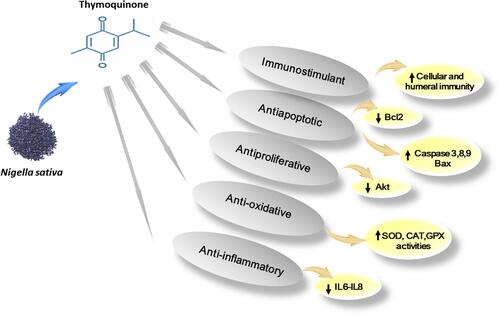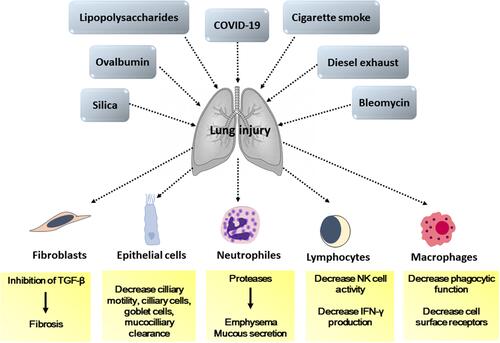Figures & data
Figure 1 The molecular function of thymoquinone (TQ) pathways.

Figure 2 The pharmacological function of thymoquinone (TQ) as an anti-inflammatory agent in the prevention of lung disease.

Table 1 Types of Thymoquinone (TQ) Nano-Formulations and Their Biological Activities
Figure 3 Thymoquinone (TQ) nanoformulations’ bioavailability, pharmacokinetics, and pharmacodynamic prospects against lung diseases.

